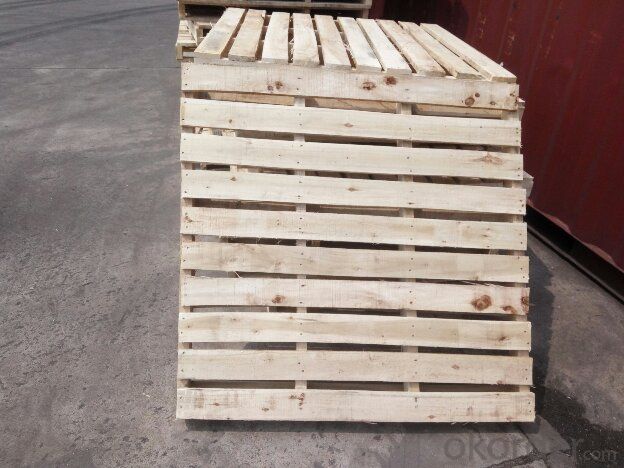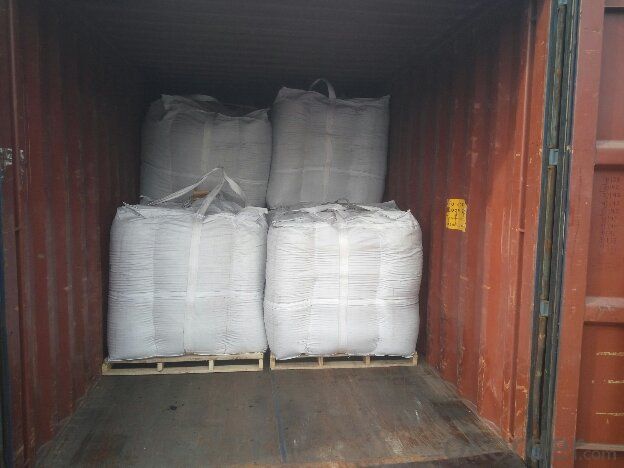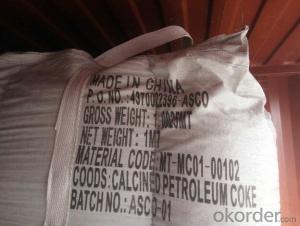Foundry Coke in 80-120mm used for Foundry company
- Loading Port:
- Shekou
- Payment Terms:
- TT OR LC
- Min Order Qty:
- 21.3
- Supply Capability:
- 1013 m.t./month
OKorder Service Pledge
OKorder Financial Service
You Might Also Like
Brief Introduction
Foundry Coke is the main fuel of melting iron in the oven. It can melt the materials in the over, make the iron reach great heat, and keep good air permeability by sustain stock column. Thus, the foundry coke should have the characteristics of big block, low reactivity, small porocity, enough anti-crush strengh, low ash and low sulphur. We welcome foreign clients to visit our factory
The coke handled by our cooperation is made from superior coking coal of Shanxi province. Provided with the advantages of low ash, low sulphur and high carbon. Our coke is well sold in European, American, Japanese and South-east Asian markets. Our owned Coke plant are located in Shanxi Province and supplying of you many kinds of coke.
we supply Foundry Coke long-term, its characteristic is best strength, low sulfur and phosphorus,thermal stability.
Specifications:
ASH % | 8% max | 10% max | 12% max |
V.M.% MAX | 1.5% max | 1.5% max | 2% max |
SULFUR % | 0.65% max | 0.65% max | 0.7% max |
MOISTURE | 5% max | 5% max | 5% max |
Size | 80mm-120mm,80-150,100-150mm, or as request | ||
Features
1. Our quality is always quite good and stable which is producing and packing according to customers' requirements.
2. Putting Client profile into first, achieved mutual benefit.
3. Good partner on business. It's a good and wise choice for customers' to purchase from us. It's our great honor to cooperate with you. It is more -widely used around the world
4. We can supply documents as follows:
- bill of loading,
-Invoice,
-Packing List
-Insurance
-standard inspection pictures of the container as specified by INSPECTORATE
-or more requested by buyer.
Pictures


FAQ
1. What is the packing?
In 25kg bag/ In jumbo bags without pallet/ Two jumbo bags with one pallet/ or as customers’ request
2. What is the production capacity?
10 thousand tons per month
3 What is payment term?
Irrevocable LC at sight/ 20% down payment by T/T and 80% against BL copy byT/T/ or to be discussed
4 What is the service?
We will send sample to the third party(CIQ, CCIC, SGS,BV or to be discussed) for checking, and present the test certificate and loading repot of shipment.
- Q:How does carbon monoxide affect air quality and human health?
- Carbon monoxide (CO) is a colorless, odorless gas that is produced from the incomplete combustion of fossil fuels, such as gasoline, coal, and wood. It is a major contributor to air pollution and has significant impacts on air quality and human health. In terms of air quality, carbon monoxide is a pollutant known as a criteria air pollutant, which means it is regulated by government agencies due to its harmful effects. When released into the atmosphere, CO reacts with other pollutants, such as nitrogen oxides and volatile organic compounds, to form ground-level ozone, which is a major component of smog. High levels of ground-level ozone can cause respiratory problems, particularly for individuals with pre-existing respiratory conditions such as asthma. Furthermore, carbon monoxide is a potent greenhouse gas that contributes to global warming and climate change. It traps heat in the atmosphere and prevents it from escaping into space, leading to rising temperatures and altered weather patterns. In terms of human health, carbon monoxide is highly toxic. When inhaled, it binds to hemoglobin in the blood, reducing its ability to carry oxygen to vital organs and tissues. This can lead to a range of health issues, from mild symptoms like headaches, dizziness, and fatigue, to more severe conditions like chest pain, confusion, and even death. Vulnerable populations such as children, the elderly, and individuals with pre-existing heart or lung conditions are particularly susceptible to the harmful effects of carbon monoxide. Exposure to high levels of carbon monoxide can occur in various settings, including indoor environments where combustion sources like gas stoves, heaters, and fireplaces are present, as well as in outdoor areas with heavy traffic or industrial emissions. To mitigate the impact of carbon monoxide on air quality and human health, regulatory measures such as emission standards for vehicles and industrial sources have been implemented. Additionally, public awareness campaigns and the use of carbon monoxide detectors in homes and workplaces are essential in detecting and preventing potential exposure to this harmful gas. In conclusion, carbon monoxide significantly affects air quality and human health. It contributes to air pollution, including the formation of ground-level ozone and greenhouse gas emissions, which have adverse effects on respiratory health, the environment, and climate change. Understanding the sources, effects, and implementing appropriate measures to reduce exposure to carbon monoxide is crucial for protecting both air quality and human well-being.
- Q:How do humans contribute to carbon emissions?
- Humans contribute to carbon emissions through various activities, such as burning fossil fuels for electricity, transportation, and heating; deforestation and land-use changes; industrial processes; and the production and disposal of waste. These actions release significant amounts of carbon dioxide and other greenhouse gases into the atmosphere, exacerbating the greenhouse effect and contributing to climate change.
- Q:What are the consequences of increased carbon emissions on global food security?
- Increased carbon emissions have significant consequences on global food security. Firstly, rising carbon dioxide levels can lead to changes in temperature and precipitation patterns, affecting crop productivity and water availability. This can result in reduced yields, crop failures, and increased vulnerability to pests and diseases, ultimately impacting food production and availability. Furthermore, carbon emissions contribute to climate change, which exacerbates extreme weather events like droughts, floods, and heatwaves. These events can destroy crops, disrupt supply chains, and increase food prices, making it difficult for vulnerable populations to access nutritious food. Additionally, climate change may lead to the loss of arable land due to desertification, sea-level rise, or other environmental changes, further diminishing food production capacity. Moreover, carbon emissions contribute to ocean acidification, which harms marine ecosystems and disrupts the food chain. This can negatively impact fish stocks and other seafood sources, affecting the livelihoods of coastal communities who rely on fishing as a primary source of food and income. Overall, increased carbon emissions have severe consequences for global food security, threatening the stability and accessibility of food supplies both on land and in the oceans. Addressing carbon emissions and adopting sustainable practices are essential in safeguarding our food systems and ensuring the wellbeing of future generations.
- Q:What are the consequences of increased carbon emissions on human migration patterns?
- Increased carbon emissions have significant consequences on human migration patterns. One of the most prominent effects is the exacerbation of climate change, leading to more frequent and intense natural disasters such as hurricanes, floods, and droughts. These extreme weather events can devastate communities, destroy infrastructure, and disrupt livelihoods, forcing people to migrate in search of safer and more stable environments. Rising sea levels, another consequence of carbon emissions, pose a significant threat to coastal regions and island nations. As sea levels continue to rise, low-lying areas become more prone to flooding and coastal erosion, making them uninhabitable. This displacement of populations, commonly referred to as climate refugees, can lead to mass migrations, putting additional strain on resources and infrastructure in destination areas. Moreover, carbon emissions contribute to changes in temperature and precipitation patterns, which can have a profound impact on agricultural activities. Shifts in growing seasons, increased frequency of droughts or floods, and the spread of pests and diseases can negatively affect crop yields and food security. This disruption in the availability of food and resources can push vulnerable populations to migrate in search of better livelihoods and food sources. The consequences of increased carbon emissions on human migration patterns also extend to health issues. Climate change can lead to the spread of diseases, such as malaria and dengue fever, as well as worsen air pollution, exacerbating respiratory problems. These health risks can force individuals and communities to relocate to areas with better healthcare infrastructure and conditions. In summary, increased carbon emissions have wide-ranging consequences on human migration patterns. The intensification of climate change, rising sea levels, disruptions to agriculture, and health risks all contribute to the displacement of populations, creating a need for individuals and communities to seek safer and more stable environments. Addressing carbon emissions and mitigating climate change is essential to minimize the negative impacts on human migration and ensure a sustainable future.
- Q:How can I see if a battery can be used to recharge it?Can not all carbon batteries charge?
- Maybe you'll ask why you don't unify the voltages of these batteries to 1.5V, you know, from the raw batteries we learned in high schoolThe battery positive electrode and the negative electrode potential (i.e. voltage) is determined by a positive electrode and a negative electrode material and whether the charge is determined by using the different electrolyte electrolyte battery two materials also need to be adjusted accordingly
- Q:What are the properties of carbon-based adhesives?
- Carbon-based adhesives have a range of properties that make them highly versatile and effective. Firstly, they have excellent adhesion capabilities, allowing them to bond to a wide variety of surfaces. Additionally, they exhibit high strength and durability, ensuring long-lasting and reliable adhesive connections. Carbon-based adhesives are also known for their resistance to heat, chemicals, and moisture, making them suitable for various applications in different environments. Furthermore, they can be easily applied and cured, allowing for efficient and quick assembly processes. Overall, the properties of carbon-based adhesives make them a popular choice for industries such as automotive, aerospace, electronics, and construction.
- Q:How does a kebab cook at home?
- It's easy to burn carbon at home1, put on the gas stove, ignited after use,2, pour some cooking oil in waste paper or Suibu, carbon on top, can be ignited
- Q:How do you make your own carbon fiber bar?Know. ID is how to make? Don't copy anything that has nothing to do with it
- Carbon fiber rods, generally used in fishing rods, medical and construction fields, the molding process is pultrusion.Pultrusion: traction carbon fiber yarn (carbon fiber yarn is usually 12K, 24K based) impregnated epoxy resin, by heating 130 degrees or so, high temperature curing molding.Specific molding process can be consulted.
- Q:How does carbon affect the formation of permafrost thawing?
- Carbon affects the formation of permafrost thawing by accelerating the process through its release into the atmosphere. As permafrost thaws, it exposes organic matter that has been frozen for centuries, releasing carbon dioxide and methane, both potent greenhouse gases. This additional carbon in the atmosphere further enhances the warming effect, leading to a positive feedback loop where increased temperatures cause more permafrost thawing, releasing more carbon, and exacerbating climate change.
- Q:What are the different colors of carbon-based gemstones?
- The different colors of carbon-based gemstones include white, yellow, brown, black, and the rare blue and pink diamonds.
1. Manufacturer Overview |
|
|---|---|
| Location | |
| Year Established | |
| Annual Output Value | |
| Main Markets | |
| Company Certifications | |
2. Manufacturer Certificates |
|
|---|---|
| a) Certification Name | |
| Range | |
| Reference | |
| Validity Period | |
3. Manufacturer Capability |
|
|---|---|
| a)Trade Capacity | |
| Nearest Port | |
| Export Percentage | |
| No.of Employees in Trade Department | |
| Language Spoken: | |
| b)Factory Information | |
| Factory Size: | |
| No. of Production Lines | |
| Contract Manufacturing | |
| Product Price Range | |
Send your message to us
Foundry Coke in 80-120mm used for Foundry company
- Loading Port:
- Shekou
- Payment Terms:
- TT OR LC
- Min Order Qty:
- 21.3
- Supply Capability:
- 1013 m.t./month
OKorder Service Pledge
OKorder Financial Service
Similar products
New products
Hot products
Related keywords





























